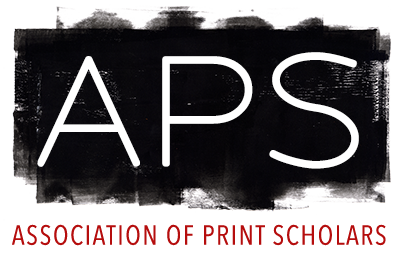Conference Paper
Posted: 08/17/2018
The Fingerprint of the Machine, Mercurial Textility, and Printed Dress Fabrics, 1815-1851
Courtney Wilder. "The Fingerprint of the Machine, Mercurial Textility, and Printed Dress Fabrics, 1815-1851," The Association of Art Historians (AAH) 2018 Annual Conference: “Looking Outward" (2018).
Early nineteenth-century European textile printers were confronted by
increasingly copious amounts of raw fabric intended for women’s garments. To
maximize profits when decorating apparently infinite lengths of blank “canvas,” printers
embraced mechanized copper rollers alongside traditional block-printing techniques.
Some designers aimed to disguise the new economizing technology. Others highlighted
the rollers’ mechanical qualities by applying to them engine-turned, lathe-generated
designs. These designs, known as “eccentrics,” record a process resulting in abstract and
endlessly variable motifs. Previously utilized for generating decorative metalwork and
counterfeit-proof documents such as banknotes, lathe engraving’s precise permutations of
optically-playful line work signified visually the durable nature of precious materials and
the value inscribed on paper currency. These qualities map awkwardly, however, onto
mass-produced fashionable dress fabrics. The moiréd appearance resulting from eccentric
engraving further cast the fabrics as mere counterfeits imitating expensive silks.
This paper suggests that eccentric textile designs exhibit a mercurial textility
indicative of contentious commercial and social issues that came to the fore as the
industrial revolution progressed. Moreover, the lathe-engraved designs embody visually
the opposition of individual choice and group identification at the heart of fashion. The
patterns of curving parallel lines recall the most quintessential marker of singularity in
humans – the fingerprint. Yet the intricacy and accuracy of the designs betray limitless
multiplicity. Ultimately, the paper asks, did the mercurial fingerprint of the machine
impart a textility capable of opening new fields of visual, as well as social, possibilities?
increasingly copious amounts of raw fabric intended for women’s garments. To
maximize profits when decorating apparently infinite lengths of blank “canvas,” printers
embraced mechanized copper rollers alongside traditional block-printing techniques.
Some designers aimed to disguise the new economizing technology. Others highlighted
the rollers’ mechanical qualities by applying to them engine-turned, lathe-generated
designs. These designs, known as “eccentrics,” record a process resulting in abstract and
endlessly variable motifs. Previously utilized for generating decorative metalwork and
counterfeit-proof documents such as banknotes, lathe engraving’s precise permutations of
optically-playful line work signified visually the durable nature of precious materials and
the value inscribed on paper currency. These qualities map awkwardly, however, onto
mass-produced fashionable dress fabrics. The moiréd appearance resulting from eccentric
engraving further cast the fabrics as mere counterfeits imitating expensive silks.
This paper suggests that eccentric textile designs exhibit a mercurial textility
indicative of contentious commercial and social issues that came to the fore as the
industrial revolution progressed. Moreover, the lathe-engraved designs embody visually
the opposition of individual choice and group identification at the heart of fashion. The
patterns of curving parallel lines recall the most quintessential marker of singularity in
humans – the fingerprint. Yet the intricacy and accuracy of the designs betray limitless
multiplicity. Ultimately, the paper asks, did the mercurial fingerprint of the machine
impart a textility capable of opening new fields of visual, as well as social, possibilities?
